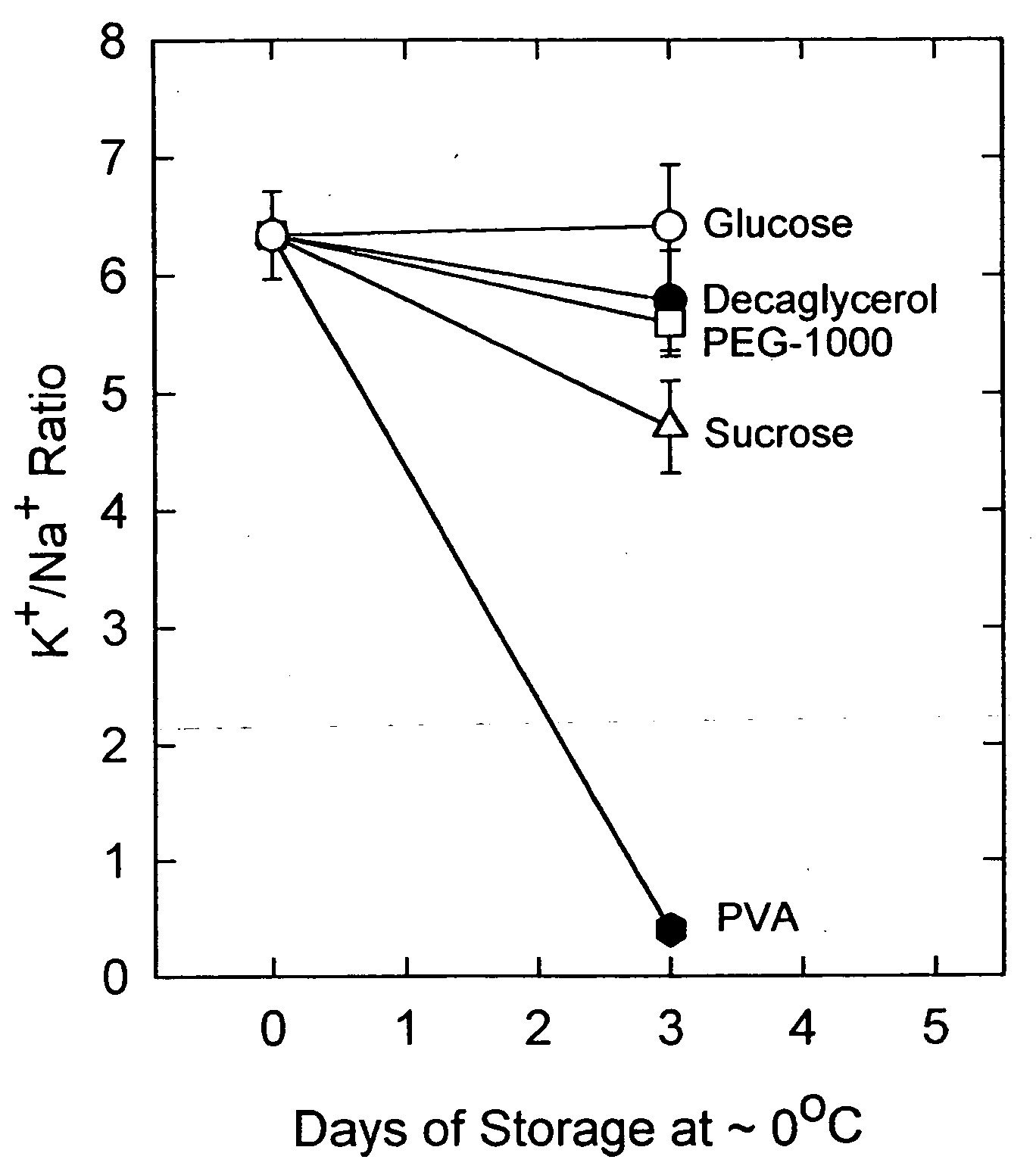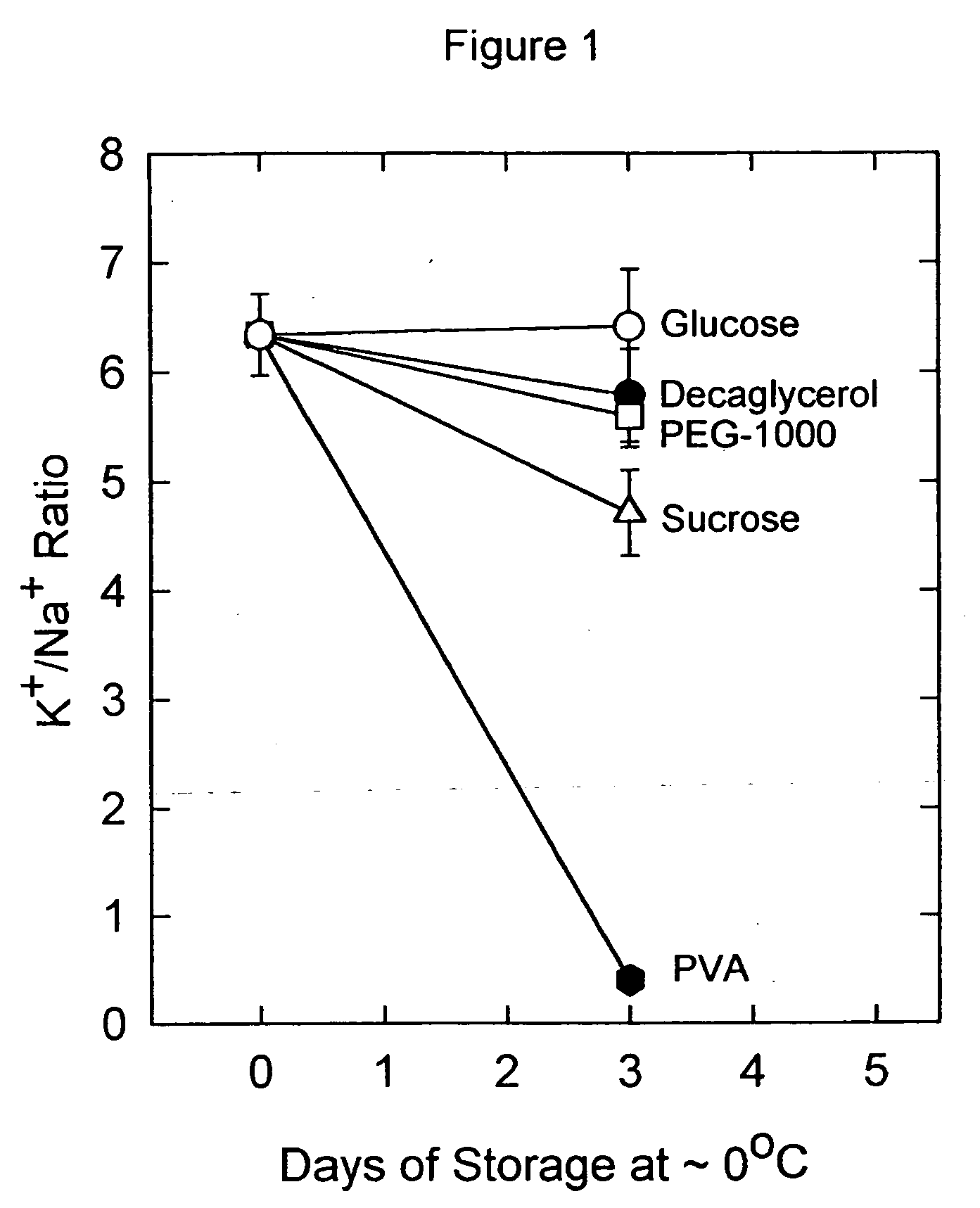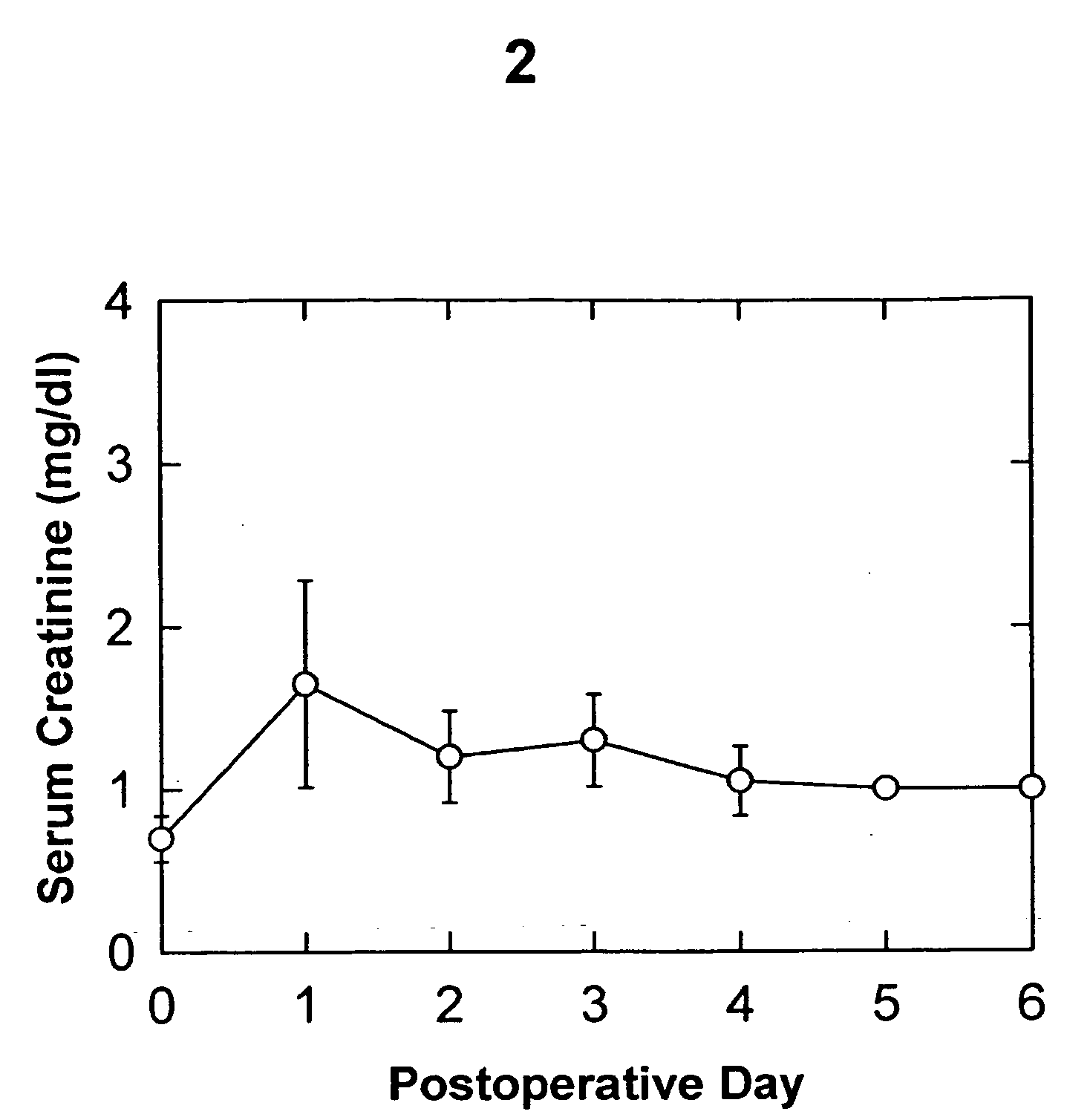Polyglycerol and lactose compositions for the protection of living systems from states of reduced metabolism
a technology of polyglycerol and lactose, applied in the field of cell, tissue, organ preservation, can solve the problems of limited useful life, many organs that could be transplanted, and no alternative solution
- Summary
- Abstract
- Description
- Claims
- Application Information
AI Technical Summary
Benefits of technology
Problems solved by technology
Method used
Image
Examples
example 1
Lactose is Effective at Supporting Cellular Viability during Hypothermic Storage
[0037] Table 1 shows that, in analogy to the results shown in FIG. 1, lactose can support the ion translocation capacity of rabbit renal cortical slices stored at 0° C.
TABLE 1Exposure of Rabbit Renal Cortical Slices to TestSolutions at 0° C. for about 5 HoursaTest solutionK+ / Na+RPS-25.33 ± 0.20RPS-Lactose5.15 ± 0.22
aRPS-Lactose consists of RPS-2 in which about 175 mM glucose is replaced with an equal number of millimoles / liter of lactose. The difference between the groups is not significant, which means that lactose is an effective impermeant and is non-toxic to renal tissue.
example 2
Successful 24-Hr Kidney Preservation with Polyglycerol / Lactose-Containing Solutions
[0038]FIG. 3 shows a comparison between the effects of 24 hrs of storage of rabbit kidneys at 0° C. after flushing with UW Solution, a preferred composition containing decaglycerol and alpha lactose (Formula 1), and a preferred composition containing decaglycerol, alpha lactose, and 5 micrograms / ml chlorpromazine (Formula 2; see Table 2 for the formulas of the solutions tested in FIG. 3) (means±1 SEM). We used chlorpromazine HCl for injection (Elkins-Sinn, Cherry Hill, N.J.) in these experiments. Kidney integrity was measured by following postoperative serum creatinine levels. The model involved removing and preserving the right kidney and transplanting it into the original donor at the site of the left kidney after storage, with removal and disposal of the left kidney at the time of transplantation. The ability of the model to detect and discriminate between different levels of reduced renal functi...
example 3
24-Hr Preservation with Different Polyglycerol / Lactose Ratios
[0047]FIG. 4 shows the results of using solutions containing polyglycerol only, lactose only, or both for 24 hr storage (means±SEM). These solutions were Formula 1 (middle point, at a PGL content of 57.9% of the total of (PGL+lactose) (n=11); Formula 1 minus lactose, with the amount of decaglycerol raised from the 18 grams / liter found in Formula 1 (20 grams of 90% decaglycerol stock=18 grams) to 32 grams / liter (35.5 g / l of 90% stock), total osmolality=297 mOsm (point shown at 100% PGL, n=6); and Formula 1 minus decaglycerol, with the amount of lactose raised to 102 mM (point shown at 0% PGL, n=5), total osmolality=300 mOsm. Intriguingly, although both the lactose-based solution and the decaglycerol-based solution yielded results equivalent to or better than UW solution (mean value for UW is represented as a solid horizontal line; dotted horizontal lines indicate plus and minus one standard error of the mean of 10 observa...
PUM
| Property | Measurement | Unit |
|---|---|---|
| temperature | aaaaa | aaaaa |
| temperature | aaaaa | aaaaa |
| concentration | aaaaa | aaaaa |
Abstract
Description
Claims
Application Information
 Login to View More
Login to View More - R&D
- Intellectual Property
- Life Sciences
- Materials
- Tech Scout
- Unparalleled Data Quality
- Higher Quality Content
- 60% Fewer Hallucinations
Browse by: Latest US Patents, China's latest patents, Technical Efficacy Thesaurus, Application Domain, Technology Topic, Popular Technical Reports.
© 2025 PatSnap. All rights reserved.Legal|Privacy policy|Modern Slavery Act Transparency Statement|Sitemap|About US| Contact US: help@patsnap.com



